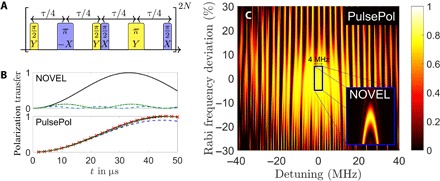Fig. 2. PulsePol sequence and simulations of robustness.

PulsePol sequence (A) and robustness compared to nuclear orientation via electron spin locking (NOVEL). (B) The polarization transfer to a single nuclear spin for NOVEL (upper graph) under perfect conditions (black line). A Δ = (2π)0.5-MHz detuning error (dashed blue line) and 2% Rabi frequency error (dashed-dotted green line) drastically reduce polarization transfer. For PulsePol (lower graph) under perfect conditions (black line), the transfer is 28% slower, as predicted by the effective Hamiltonian of Eq. 2 (red crosses). Detuning errors Δ = 0.1Ω0 = (2π)5 MHz (dashed blue line) and Rabi frequency errors δΩ = 0.1Ω0 = (2π)5 MHz (dashed-dotted green line) have a very small effect. (C) Considering a system of one electron spin and five nuclear spins, for the same parameters ωI = (2π)2 MHz and Ω0 = (2π)50 MHz, polarization transfer versus Δ and δΩ/Ω0 for the PulsePol sequence, with a comparison to a NOVEL sequence for its relevant detuning values |Δ| < (2π)2 MHz in the inset. The graphs result from averaging more than 100 realizations of the locations of the five closest nuclear spins to the NV center electron spin on a carbon lattice, and for PulsePol, a resonance shift of 2.5% and corresponding phase errors were used (see the Supplementary Materials).
